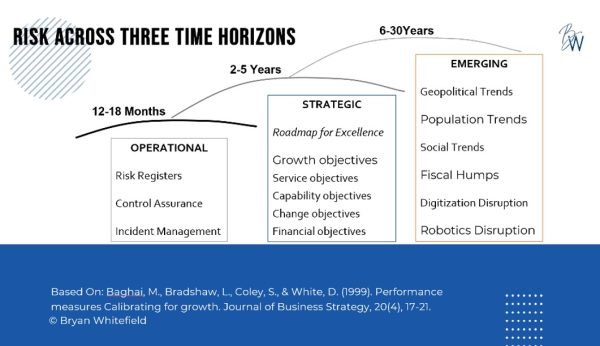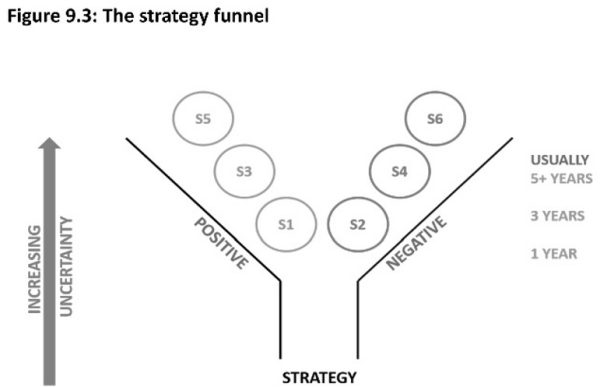I sat on a panel at the RiskNZ conference in Auckland recently and a question asked of the panel was for tips on handling emerging risks. Specifically, implementing guidance from ISO/TS 31050:2023 Risk management – Guidelines for managing an emerging risk to enhance resilience.
To be honest, I had not spent any time diving into this standard. I had always considered emerging risks in various ways. One way was via the over-the-horizon approach my colleague Dr Andrew Pratley and I came up with many years ago (see figure below titled Risk Across Three Time Horizons). It is based on The Three Horizons of Growth of Baghai et al (see figure) which are:
Horizon 1: Extend and defence core business (mature businesses)
Horizon 2: Build emerging businesses (emergent businesses)
Horizon 3: Create viable options (embryonic businesses)
Our risk view was a bit different. We looked at the three time horizons for risk as being Operational, Strategic and Emerging. I won’t get into the idiosyncrasies of emerging vs emergent, other than to say emergent is probably a better term given organisations are complex systems operating in a complex system.

My perspective is that emerging risks should be revisited periodically, but not too frequently. Examining these patterns too often can make it difficult to identify significant shifts in patterns. You will miss a sudden shift. Which leads to my second method. My Strategy Funnell I introduced in Chapter 9 of my book Risky Business – How Successful Organisations Embrace Uncertainty (see figure). This approach is about developing scenarios of the future, creating ways of monitoring the signals that the scenario is developing along the lines envisioned or changing significantly. As the scenarios move along the strategy funnel over time, you either jettison them or adjust them.

In my book Team Think – How Teams Make Great Decisions (which launches at the end of the month) I introduce the Strategy Funnel Mk 2. In this version I am more focused on strategic planning by adding in the gateway model used in major projects, where each project has to pass through a gate satisfactorily to proceed to the next phase. The scenarios alongside the actions being deployed, to achieve strategic goals, are being assessed at each gateway.
The result is a more robust set of signals that reveal both changes in the scenario and in our capabilities. A better blend of strategy and risk which are two sides of the same coin after all.
As always, I’d love to hear your thoughts.

